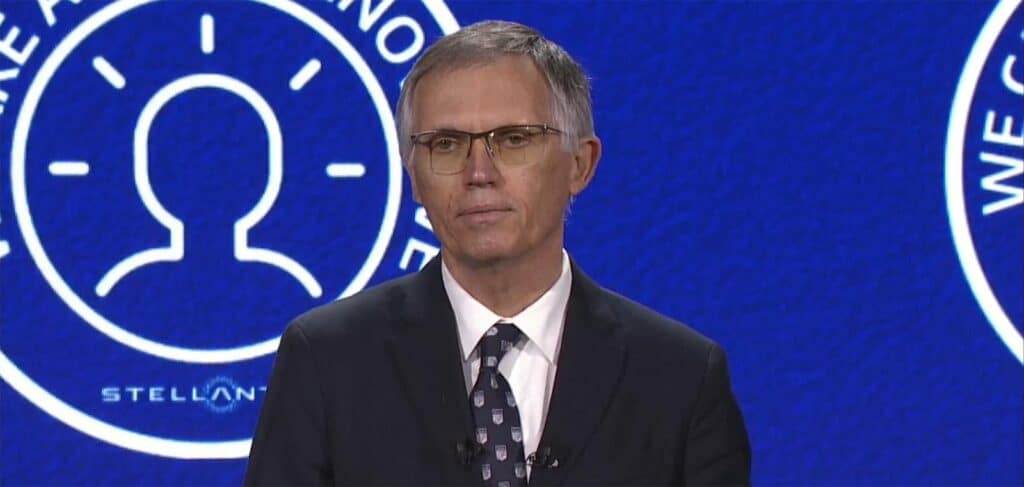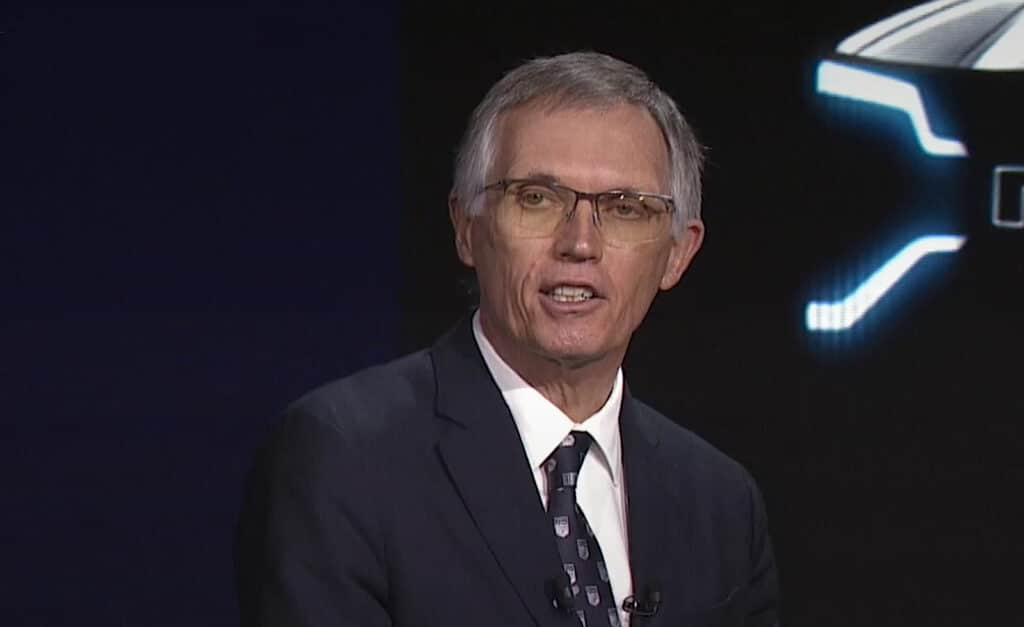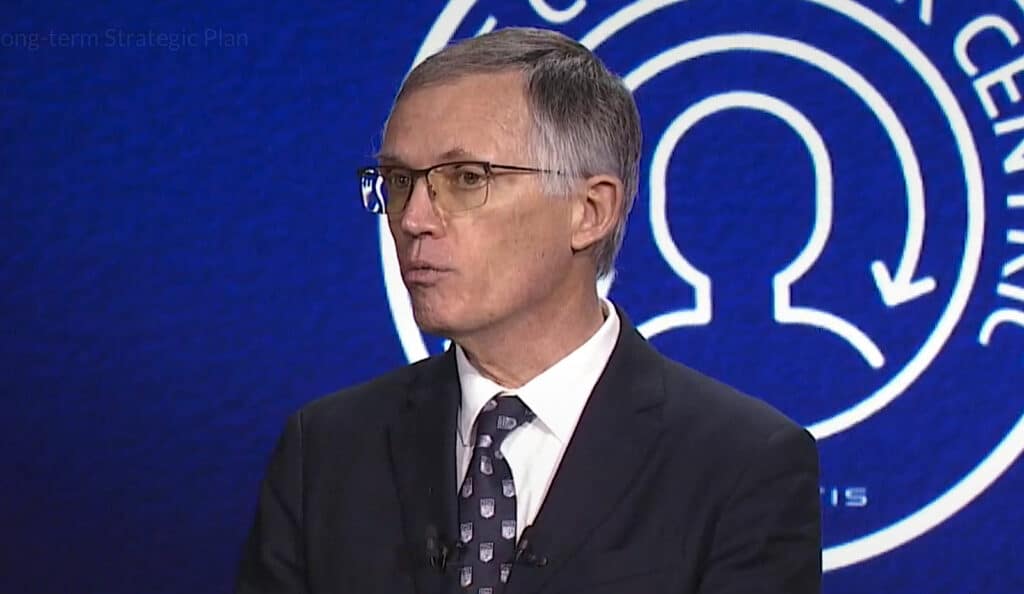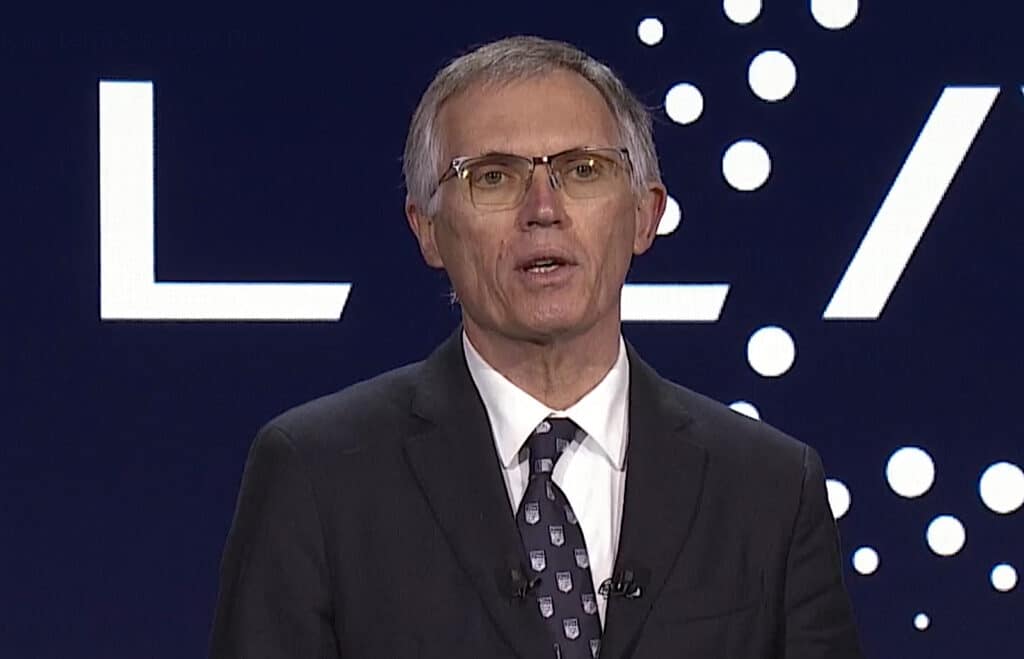As Stellantis announced a $155 million investment in three Indiana plants to produce EV components, TheDetroitBureau.com was invited to a roundtable discussion with CEO Carlos Tavares.

Stellantis plans to produce their electric drive modules in Kokomo, Indiana, making updates to the Indiana Transmission, Kokomo Transmission, and Kokomo Casting plants. The $155 million brings the total amount Stellantis has invested in electrification production in Indiana to nearly $3.3 billion since 2020.
The company touted the investments as part of the long-term strategy to reach 50% electric vehicle sales volume in the U.S. by 2030. The first all-electric vehicles are coming from Ram this year in the form of the ProMaster EV van and the Ram 1500 Rev pickup, and from Jeep in 2024 with the Jeep Recon and Wagoneer S EVs.
The company’s chief sat for 90 minutes participating in a wide-ranging interview with a number of journalists asking questions. This has been edited for clarity and brevity.
Q: Automakers around the world are pivoting toward electric vehicles, and a lot have indicated dates when they will no longer produce internal combustion engines, and yet the take rate on EVs is mixed. How do you plan to accelerate that?

Tavares: When subsidies [for EVs] ended in Germany and Italy, you see that there is an immediate drop on the demand. Where does that lead us? Usability leads us to affordability, which means if you want to accelerate the trend — assuming that we have clean energy and the right density of the charging network — we need to make them affordable, and we have to bring a little bit more range. I don’t think we are there yet. I think we need to be above 400 miles for people to get rid of range anxiety.
At the end of the day, EVs have to be affordable and profitable. If we impose pricing and if it makes an unprofitable proposition for the OEMs, then eventually they will not offer as much as they could or should. On that field, we need to keep all the stakeholders winning. There is one stakeholder that is not around the table, and that’s the planet. Then the consumer needs to win on the total cost of ownership.
Q: How did the Inflation Reduction Act change how your company looks at allocating capital for batteries globally?
Tavares: We have had a very simple strategy since long before the Inflation Reduction Act. Our strategy has always been that in a given region, what you sell in that region needs to be sourced from that specific region, above 80%. Of course, I’m talking about the big regions like North America, Europe and so on. That’s for all sorts of reasons. It can be cost competitiveness, can be custom duties, can be logistic costs, can be environmental, for our carbon footprint.

For all those reasons, there is a good business case to source in the region, what you sell in the region. The deeper you are in the sourcing in the region, the more cost competitive you are, because you are using the full potential of the region. Here in America, it’s all about the USMCA [free trade agreement], of course. We believe that we should be above 80% sourcing battery cells in the region, and we are much higher than 90%. So we are far above that limit.
Focus on hybrids or EVs?
Q: Most of your electrified vehicles in America so far have been plug-in hybrids. Will you focus on plug-in hybrids for the next decade, or will it be pure EVs?
Tavares: Our PHEV technology in the 4xe Jeep and Chrysler Pacifica has proven to be a big success. We’re number one in sales on PHEV, and I don’t think it’s going to stop here. I think it’s going to move to BEV first because in terms of pure emissions, it’s a better proposal. If the energy is clean, I think it’s going to move. And I think that in the coastal areas, a pure EV is a stronger statement to the planet than a PHEV. Some people will be eager to make a stronger statement that they want to protect the planet by buying a pure EV.
We will have to make sure that we have convenient charging. The more you go to the center of the cities, the more it’s difficult to charge your EV. The more you go in the suburbs, the more you have independent houses with garages and then you can charge. At Stellantis we are doing our very best to make sure that when we sell an EV, we sell the charging unit. We have a company that engineers and manufacturers charging units, so we try to sell the EV, the charging unit, and we take care of the installation with a third party that comes to your home even before you get the car delivered.

Q: You mentioned making EVs affordable, and in the past, you have said you want Stellantis to sell internal combustion vehicles that are cheap and efficient. Do you still think you need to focus on affordable cars?
Tavares: Currently we have 23 EVs on sale. By the end of this year, we’ll have 32. By the end of 2024, we will have 47, doubling the number in two years. Why do we do this? First because we want to demonstrate that we will be a very competitive EV mobility company. Secondly, because if you ramp up the volumes, we’ll be in a position to drive cost reductions faster by the volume scale effect. We cannot fake it! This has to be a strong, powerful ramp-up using the full power of our 14 brands and the different regions of the world.
We had 41% EV sales growth last year using only one of the two engines of the company, which was Europe. We didn’t even fire up the second engine, which is North America. Now we’re starting the EV offensive in the U.S. with the ProMaster EV, then the Fiat 500e and most probably the Maserati Grecale. Then we have the first pure EV ever done at Jeep, the Jeep Avenger, on sale in Europe. I’m very excited about what we are going to bring to the U.S. market because North America is by far the biggest engine of our company.
We have to recognize that the status quo is the only thing we cannot afford. This is the Darwinian period, and we need to adapt to a new reality. We’re trying to do it ahead of our competitors because we are very mindful of the challenge that we have ahead.
- SEO Powered Content & PR Distribution. Get Amplified Today.
- Platoblockchain. Web3 Metaverse Intelligence. Knowledge Amplified. Access Here.
- Source: https://www.thedetroitbureau.com/2023/03/qa-stellantis-ceo-carlos-tavares-2/



